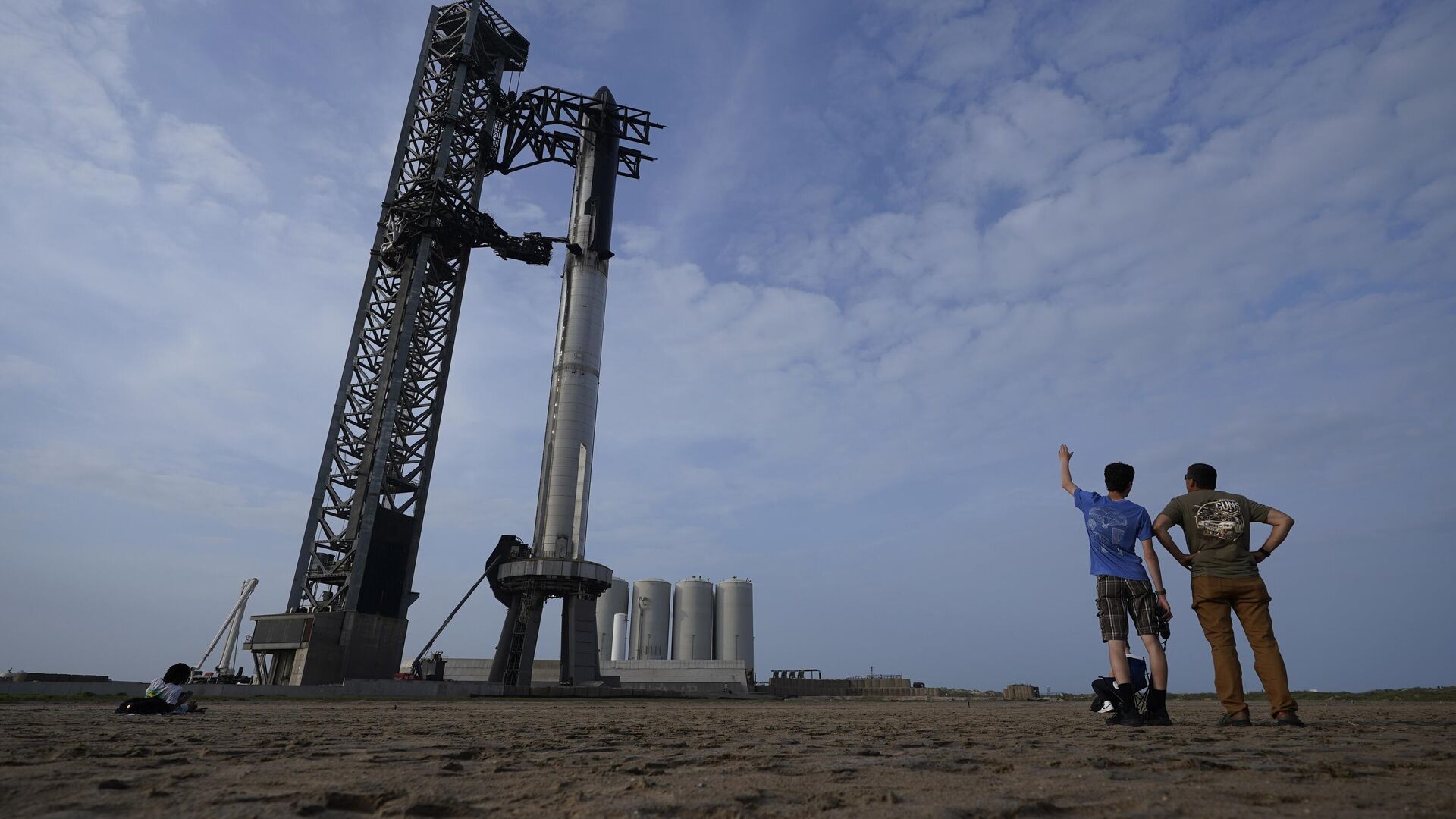https://sputnikglobe.com/20230421/musk-says-spacex-can-be-ready-for-second-starship-flight-test-in-1-to-2-months-1109751262.html
Musk Says SpaceX Can Be Ready for Second Starship Flight Test in 1 to 2 Months
Musk Says SpaceX Can Be Ready for Second Starship Flight Test in 1 to 2 Months
Sputnik International
SpaceX CEO Elon Musk says that the company should be ready for another test launch of its Starship and Super Heavy rocket system in a month or two.
2023-04-21T23:13+0000
2023-04-21T23:13+0000
2023-04-21T23:14+0000
beyond politics
spacex
starship
elon musk
science & tech
https://cdn1.img.sputnikglobe.com/img/07e7/04/14/1109679971_0:167:3047:1881_1920x0_80_0_0_514001384777a3581f18c38d2259edf5.jpg
"Looks like we can be ready to launch again in 1 to 2 months," Musk wrote on Twitter on Friday. Musk said SpaceX will need to repair the launch pad after the first flight test on Thursday created a big crater underneath the launch mount in Starbase, Texas. Three months ago, according to Musk, SpaceX started building a massive water-cooled, steel plate to go under the launch mount, but it was not ready in time for the first launch. Musk added that the Starship team thought, based on data from a static fire test, that the original base underneath the launchpad would make it through the first launch. In early February, SpaceX conducted a static fire test of 31 of the 33 Raptor engines on the Super Heavy booster at 50% thrust. On Thursday, SpaceX carried out the first combined launch of the Starship spacecraft and the Super Heavy first stage booster. The spacecraft was deliberately blown up during the test flight after it began to lose altitude when multiple engines failed. The spacecraft climbed to an apogee of about 39 kilometers (24 miles) over the Gulf of Mexico, which is the highest point any Starship spacecraft has reached to-date in the program's history. The Starship is the centerpiece of SpaceX efforts to develop a fully reusable transportation system designed to carry humans to the Moon and on long-duration flights to Mars and beyond. The system is designed for in-space refueling and the ability to land at destinations across the solar system and return to Earth.
https://sputnikglobe.com/20230420/spacexs-starship-launch-ends-with-midair-explosion-after-engine-failure-1109713275.html
Sputnik International
feedback@sputniknews.com
+74956456601
MIA „Rossiya Segodnya“
2023
Sputnik International
feedback@sputniknews.com
+74956456601
MIA „Rossiya Segodnya“
News
en_EN
Sputnik International
feedback@sputniknews.com
+74956456601
MIA „Rossiya Segodnya“
Sputnik International
feedback@sputniknews.com
+74956456601
MIA „Rossiya Segodnya“
spacex starship, spacex rocket blows up, next spacex launch
spacex starship, spacex rocket blows up, next spacex launch
Musk Says SpaceX Can Be Ready for Second Starship Flight Test in 1 to 2 Months
23:13 GMT 21.04.2023 (Updated: 23:14 GMT 21.04.2023) WASHINGTON (Sputnik) - SpaceX can be ready for a second flight test of the Starship and Super Heavy rocket system in one to two months, company founder Elon Musk said in a statement.
"Looks like we can be ready to launch again in 1 to 2 months," Musk wrote on Twitter on Friday.
Musk said SpaceX will need to repair the launch pad after the first flight test on Thursday created a big crater underneath the launch mount in Starbase, Texas.
Three months ago, according to Musk, SpaceX started building a massive water-cooled, steel plate to go under the launch mount, but it was not ready in time for the first launch. Musk added that the Starship team thought, based on data from a static fire test, that the original base underneath the launchpad would make it through the first launch.
In early February, SpaceX conducted a static fire test of 31 of the 33 Raptor engines on the Super Heavy booster at 50% thrust.
On Thursday, SpaceX carried out the first combined launch of the Starship spacecraft and the Super Heavy first stage booster. The spacecraft was deliberately blown up during the test flight after it began to lose altitude when multiple engines failed. The spacecraft climbed to an apogee of about 39 kilometers (24 miles) over the Gulf of Mexico, which is the highest point any Starship spacecraft has reached to-date in the program's history.
The Starship is the centerpiece of SpaceX efforts to develop a fully reusable transportation system designed to carry humans to the Moon and on long-duration flights to Mars and beyond. The system is designed for in-space refueling and the ability to land at destinations across the solar system and return to Earth.



